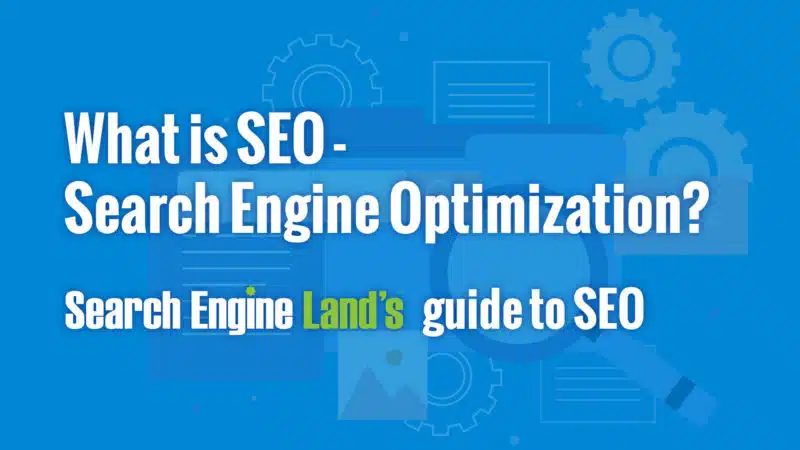To improve search engine optimization performance, focus on high-quality content and relevant keywords. Optimize your website’s technical aspects, like page speed and mobile responsiveness.
Search Engine Optimization (SEO) is crucial for increasing your website’s visibility. Quality content attracts visitors and keeps them engaged. Relevant keywords help search engines understand your content. Technical optimization ensures your site performs well on all devices. By combining these strategies, you can enhance your search engine rankings.
Regularly updating your content and keeping an eye on analytics will provide insights into what’s working. Engaging with your audience through social media and backlinks will also boost your SEO performance. A well-rounded approach to SEO can significantly improve your online presence and drive more organic traffic to your site.

Keyword Research
Keyword research is crucial for improving search engine optimization (SEO) performance. It involves finding and analyzing search terms that people enter into search engines. Effective keyword research helps you understand what your target audience is searching for, allowing you to optimize your content accordingly.
Finding High-traffic Keywords
High-traffic keywords are terms that many people search for online. Identifying these keywords can drive more visitors to your website. Use tools like Google Keyword Planner and SEMrush to discover popular search terms. Look for keywords with high search volume but low competition. This balance helps you rank higher in search engine results.
Here are some steps to find high-traffic keywords:
- Enter a broad topic into a keyword research tool.
- Analyze the search volume and competition for each keyword.
- Choose keywords with high volume and low competition.
Long-tail Keywords
Long-tail keywords are phrases containing three or more words. They are more specific and less competitive than short-tail keywords. Using long-tail keywords can help attract targeted traffic to your site. For example, instead of “shoes,” use “best running shoes for women.”
Benefits of long-tail keywords include:
- Higher conversion rates due to specific searches.
- Less competition, making it easier to rank.
- Better alignment with user intent.
To find long-tail keywords:
- Think about specific questions your audience might ask.
- Use tools like AnswerThePublic and Ubersuggest.
- Analyze the search volume and relevance of each phrase.
| Tool | Function |
|---|---|
| Google Keyword Planner | Find high-traffic keywords |
| SEMrush | Analyze competition |
| AnswerThePublic | Discover long-tail keywords |
| Ubersuggest | Analyze keyword relevance |
Effective keyword research is the foundation of a successful SEO strategy. Focus on finding high-traffic and long-tail keywords to improve your website’s visibility.
Content Quality
Content Quality is crucial for Search Engine Optimization (SEO) performance. Search engines prioritize high-quality content. Quality content keeps visitors engaged. It also encourages them to return. This section covers creating valuable content and updating old content.
Creating Valuable Content
Valuable content attracts and retains readers. It answers their questions. It also solves their problems. Consider these points:
- Research your audience’s needs.
- Use simple language.
- Provide accurate information.
- Include images and videos.
- Use keywords naturally.
Write in an engaging tone. Make your content easy to read. Break text into short paragraphs. Use headers and bullet points. Ensure your content is original. Avoid plagiarism.
Updating Old Content
Updating old content keeps it relevant. Old content can become outdated. Regular updates improve its usefulness. Here are some tips:
- Review your old posts regularly.
- Update facts and statistics.
- Refresh images and links.
- Improve readability.
- Add new information.
Updated content signals to search engines. It shows that your website is active. This can boost your SEO performance. Keep track of your updates in a content calendar.
Enhancing content quality is vital for better SEO. Focus on creating valuable content and updating old content.
On-page Seo
On-Page SEO involves optimizing individual web pages. This improves search engine rankings and drives organic traffic. Key elements include meta tags, header tags, and more.
Optimizing Meta Tags
Meta tags provide search engines with information about your page. These include the title tag and meta description. Ensure your title tag is unique and under 60 characters. It should contain your primary keyword.
Meta descriptions should be under 160 characters. They should include your primary keyword. Use action words to make them compelling. These descriptions appear in search results and influence click-through rates.
| Meta Tag | Best Practices |
|---|---|
| Title Tag | Use primary keyword, keep it under 60 characters |
| Meta Description | Include primary keyword, keep it under 160 characters |
Using Header Tags
Header tags (H1, H2, H3) structure your content. They help search engines understand the page hierarchy. Each page should have one H1 tag that includes the main keyword.
Use H2 tags for main sections. These should also contain relevant keywords. H3 tags can be used for sub-sections. Organize content with these tags for better readability.
- H1: Main Title (Primary Keyword)
- H2: Main Sections (Relevant Keywords)
- H3: Sub-Sections (Related Keywords)
Keep your headers clear and concise. This improves user experience and SEO performance.

Technical Seo
Technical SEO is crucial for improving search engine optimization performance. It focuses on the technical aspects of your website. Good technical SEO helps search engines crawl and index your site better. This boosts your rankings and visibility. Two important aspects of technical SEO are site speed and mobile-friendly design.
Improving Site Speed
Site speed is vital for user experience and SEO. A slow website can frustrate users and increase bounce rates. Here are some tips to improve site speed:
- Optimize Images: Use compressed images without losing quality.
- Leverage Browser Caching: Store static files in the user’s browser.
- Minify CSS, JavaScript, and HTML: Remove unnecessary characters and spaces.
- Use a Content Delivery Network (CDN): Distribute content across multiple servers.
- Enable Gzip Compression: Reduce the size of your HTML, CSS, and JavaScript files.
Mobile-friendly Design
More users access websites from mobile devices. A mobile-friendly design is essential. Google uses mobile-first indexing, so mobile usability impacts your SEO.
Here are ways to ensure your site is mobile-friendly:
- Responsive Design: Use a design that adapts to different screen sizes.
- Fast Loading Times: Ensure your site loads quickly on mobile devices.
- Easy Navigation: Make menus and buttons easy to use on small screens.
- Readable Text: Use fonts that are easy to read without zooming.
- Touch-Friendly Elements: Ensure all clickable elements are easy to tap.
Check your site’s mobile-friendliness using Google’s Mobile-Friendly Test tool. This tool gives you detailed insights and suggestions for improvement.
Link Building
Link building is crucial for improving search engine optimization (SEO) performance. It helps boost your website’s authority and visibility. By acquiring quality backlinks and implementing internal linking strategies, you can significantly enhance your site’s ranking on search engines.
Acquiring Backlinks
Backlinks are links from other websites that point to your site. They act as votes of confidence for your content. Here are some effective ways to acquire backlinks:
- Guest Blogging: Write articles for other blogs in your niche.
- Broken Link Building: Find broken links on other sites and suggest your content as a replacement.
- Content Promotion: Share your content on social media and forums.
- Influencer Outreach: Connect with influencers and ask for backlinks.
Tools like Ahrefs and SEMrush can help you find link-building opportunities. Always aim for high-authority sites for better results.
Internal Linking Strategies
Internal links connect different pages on your website. They help search engines understand your site’s structure. Here are some strategies for effective internal linking:
- Create a Content Hub: Group related articles around a main topic.
- Use Descriptive Anchor Text: Make your links’ text clear and relevant.
- Link to High-Value Pages: Direct traffic to your most important pages.
- Update Older Posts: Add links to new content in your older posts.
Internal linking improves user experience and keeps visitors on your site longer. It also distributes link equity across your site, enhancing the SEO performance of multiple pages.
User Experience
Improving User Experience is crucial for better Search Engine Optimization (SEO) performance. A seamless user experience keeps visitors engaged. It also sends positive signals to search engines. This section will discuss how to enhance user experience.
Enhancing Site Navigation
Good site navigation is essential. It helps users find what they need quickly. A well-structured menu should guide users effortlessly. Use clear and concise labels for menu items.
- Use a simple menu structure.
- Include a search bar for easier access.
- Ensure all links are working.
A sitemap helps both users and search engines. It offers a clear path through your site. Breadcrumbs can also improve navigation. They show users their current location within the site.
Reducing Bounce Rate
A high bounce rate can hurt your SEO. It indicates users leave your site quickly. To reduce bounce rate, make your content engaging.
- Ensure your page loads quickly.
- Use high-quality images and videos.
- Provide valuable and relevant content.
A responsive design is crucial. It ensures your site works well on all devices. Mobile-friendly websites offer a better user experience. This helps keep visitors on your site longer.
Analytics And Monitoring
Effective Analytics and Monitoring are crucial for improving your Search Engine Optimization (SEO) performance. By consistently tracking and analyzing data, you can make informed decisions that enhance your website’s visibility and ranking. This section covers essential strategies for using SEO tools and tracking performance metrics.
Using Seo Tools
SEO tools help gather data, identify trends, and offer insights. There are many tools available, each with unique features. Popular tools include:
- Google Analytics: Tracks website traffic and user behavior.
- Google Search Console: Monitors site performance and search queries.
- Ahrefs: Analyzes backlinks and competitor strategies.
- SEMrush: Provides keyword research and site audit reports.
These tools offer detailed reports on your website’s performance. Use these insights to optimize your content and strategy.
Tracking Performance Metrics
Monitoring key metrics helps evaluate your SEO efforts’ effectiveness. Important metrics to track include:
| Metric | Description |
|---|---|
| Organic Traffic | Number of visitors from search engines. |
| Bounce Rate | Percentage of visitors who leave after one page. |
| Average Session Duration | Average time users spend on your site. |
| Keyword Rankings | Positions of your targeted keywords in search results. |
Regularly reviewing these metrics can reveal strengths and weaknesses. Adjust your strategy based on these insights to improve your SEO performance.

Credit: searchengineland.com
Frequently Asked Questions
How To Improve Seo Performance?
Improve SEO by optimizing keywords, creating quality content, and earning backlinks. Ensure mobile-friendliness and fast loading times. Use meta tags effectively.
How Search Engine Performance Can Be Improved?
Improve search engine performance by optimizing website speed, using relevant keywords, creating quality content, and building backlinks. Ensure mobile-friendliness and regularly update content.
How Can I Optimize My Search Engine?
To optimize your search engine, use relevant keywords, create quality content, improve site speed, and ensure mobile-friendliness. Regularly update content and build high-quality backlinks.
How To Improve Seo Rankings In 2024?
Improve SEO rankings in 2024 by optimizing for mobile, enhancing page speed, using relevant keywords, creating quality content, and securing backlinks.
What Is Seo Performance?
SEO performance refers to how well your website ranks on search engines like Google. It impacts visibility and traffic.
Conclusion
Boosting your SEO performance requires consistent effort and strategic planning. Focus on quality content, relevant keywords, and user experience. Regularly update your website to stay ahead. Implement these tips, monitor your progress, and watch your rankings improve. Achieving better SEO results is within reach with dedication and the right tactics.


